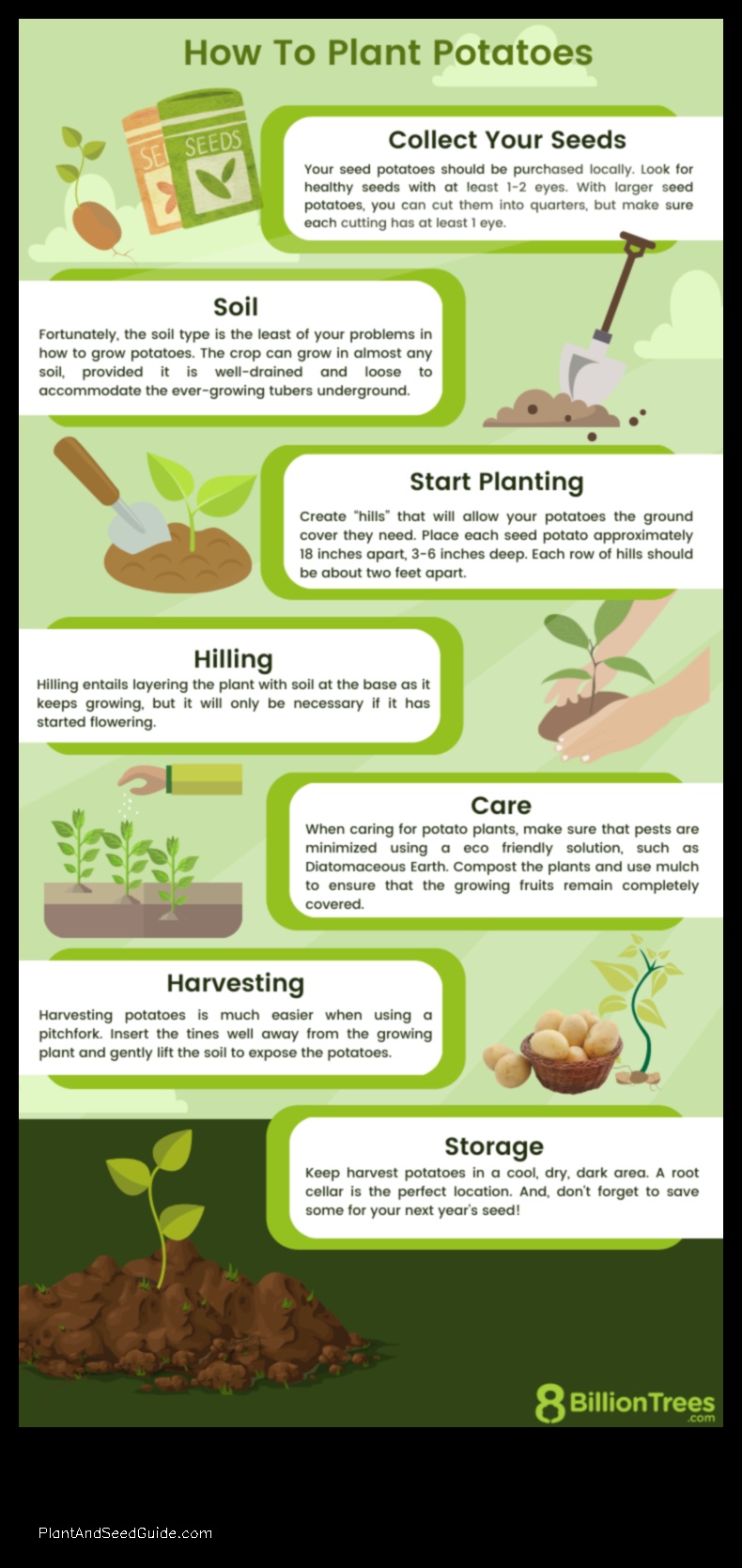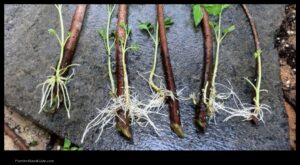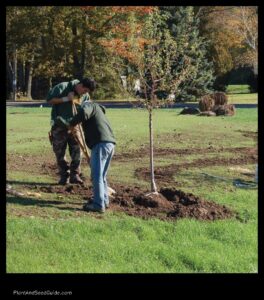
How to Plant Potatoes in Ohio
This article will teach you how to plant potatoes in the state of Ohio. It covers everything from choosing the right variety of potatoes to harvesting and storing your crop.

When to Plant Potatoes in Ohio
The best time to plant potatoes in Ohio is in early spring, when the soil has warmed up to at least 45 degrees Fahrenheit. You can plant potatoes as early as April, but if the weather is still cold, you may want to wait until May.
Choosing the Right Potato Variety for Ohio
There are many different varieties of potatoes to choose from, but not all of them are suitable for growing in Ohio. When choosing a potato variety, you need to consider the following factors:
Climate: Ohio has a humid continental climate with hot summers and cold winters. You will need to choose a potato variety that is resistant to the cold and heat.
Soil: Ohio’s soil is typically loamy and well-drained. You will need to choose a potato variety that is adapted to this type of soil.
Pests and diseases: Ohio has a number of pests and diseases that can affect potatoes. You will need to choose a potato variety that is resistant to these pests and diseases.
Some good potato varieties for Ohio include:
Russet Burbank
Yukon Gold
Red Pontiac
White Rose
Fingerling

Preparing the Soil for Planting Potatoes
Before you can plant potatoes, you need to prepare the soil.
If your soil is heavy clay, you will need to add compost or sand to improve drainage. You should also test your soil pH and adjust it if necessary. Potatoes grow best in soil with a pH of 6.0 to 6.8.The soil should be loose and well-drained..
Once you have prepared the soil, you can start planting potatoes.
Planting Potatoes
To plant potatoes, you will need to dig a trench about 6 inches deep. Place the potatoes in the trench, about 12 inches apart. Cover the potatoes with soil and water well.
The potatoes will start to sprout in about 2 weeks. Once the sprouts are about 6 inches tall, you can hill them up. This means covering the stems with soil to protect them from the sun and to encourage the formation of more potatoes.
You will need to hill the potatoes up several times throughout the growing season.
Caring for Potato Plants
Potato plants need regular watering, especially during dry spells. You should also fertilize the plants every few weeks with a balanced fertilizer.
Potato plants are susceptible to a number of pests and diseases, including:
Colorado potato beetles
Potato blight
Late blight
Early blight
Blackleg
You can control these pests and diseases by using organic pesticides and fungicides.
Harvesting Potatoes
You can start harvesting potatoes when the skins are firm and the flesh is white. To harvest potatoes, dig up the plants carefully so as not to damage the potatoes.
Potatoes can be stored in a cool, dark place for several months.
Storing Potatoes
To store potatoes, you will need to first cure them. This means storing them in a warm, dry place for about 2 weeks. Once the potatoes are cured, you can store them in a cool, dark place for several months.
Potatoes should be stored in a perforated bag or container so that they can breathe. You should also check the potatoes regularly for signs of spoilage.
Pests and Diseases of Potatoes in Ohio
Potatoes are susceptible to a number of pests and diseases, including:
Colorado potato beetles
Potato blight
Late blight
Early blight
Blackleg
You can control these pests and diseases by using organic pesticides and fungicides.
FAQ
Q: When is the best time to plant potatoes in Ohio?
A: The best time to plant potatoes in Ohio is in early spring, when the soil has warmed up to at least 45 degrees Fahrenheit. You can plant potatoes as early as April, but if the weather is still cold, you
| Feature | Answer |
|---|---|
| Potato | A starchy tuber that is a member of the Solanaceae family. Potatoes are a popular vegetable that can be eaten boiled, fried, baked, or mashed. |
| Gardening | The practice of growing plants for food, beauty, or other purposes. Gardening can be done in a variety of settings, including backyards, community gardens, and farms. |
| Growing potatoes | The process of planting, caring for, and harvesting potatoes. Growing potatoes can be a rewarding experience, and it is a great way to get fresh, healthy food. |
| Potato planting | The process of planting potatoes. Potato planting can be done in a variety of ways, but the most common method is to plant potatoes in hills. |
| Ohio | A state in the Midwestern United States. Ohio is home to a variety of climates, soil conditions, and pests, which can affect the growing of potatoes. |
IWhen to plant potatoes in Ohio
The best time to plant potatoes in Ohio is in early spring, after the last frost date. Potatoes can be planted as soon as the soil can be worked, but they will not grow well if the ground is too cold. The ideal soil temperature for planting potatoes is between 45 and 55 degrees Fahrenheit.
You can check the soil temperature by inserting a soil thermometer into the ground. If the temperature is below 45 degrees Fahrenheit, it is too cold to plant potatoes. If the temperature is above 55 degrees Fahrenheit, the potatoes may start to grow too quickly and will be more susceptible to pests and diseases.
The best time to plant potatoes in Ohio is typically in early April. However, the exact planting date will vary depending on the weather conditions in your area. If you are unsure of when to plant potatoes, it is best to consult with your local extension office.
Choosing the right potato variety for Ohio
There are many different varieties of potatoes available, each with its own unique characteristics. When choosing a potato variety for Ohio, it is important to consider the following factors:
Climate: The climate in Ohio can vary greatly from one region to another. Some areas are cooler and wetter, while others are warmer and drier. The climate will affect the growing season and the type of potatoes that will thrive in a particular area.
Soil: The soil in Ohio can also vary greatly from one region to another.
The type of soil will affect the drainage and fertility of the soil, which will in turn affect the growth of the potatoes.Some soils are sandy, while others are clayey..
Purpose: The purpose for which you are growing potatoes will also affect the variety that you choose. If you are growing potatoes for eating, you will want to choose a variety that is known for its taste and texture. If you are growing potatoes for storage, you will want to choose a variety that is resistant to pests and diseases.
Once you have considered these factors, you can begin to narrow down your choices of potato varieties.
You can find information on potato varieties from your local extension office, gardening books, and online resources.There are many resources available to help you choose the right variety for your needs..
Here are some of the most popular potato varieties that are grown in Ohio:
Yukon Gold: Yukon Gold potatoes are a versatile variety that is good for both eating and storage. They have a yellow skin and a creamy, buttery flesh.
Russet Burbank: Russet Burbank potatoes are a popular choice for baking and frying. They have a thick, rough skin and a white flesh.
Red Pontiac: Red Pontiac potatoes are a good choice for boiling and mashing. They have a thin, red skin and a firm, white flesh.
White Lady: White Lady potatoes are a good choice for salads and soups. They have a thin, white skin and a delicate, creamy flesh.
These are just a few of the many potato varieties that are available for growing in Ohio. By considering the factors listed above, you can choose the right variety for your needs and enjoy a bountiful harvest of delicious potatoes.
Preparing the soil for planting potatoes
The soil for planting potatoes should be loose and well-drained. If the soil is too heavy or compacted, the potatoes will not grow well. You can improve the drainage of the soil by adding compost or sand.
You should also test the pH of the soil before planting potatoes. Potatoes prefer a soil pH of 6.0 to 6.5. If the soil is too acidic, you can add lime to raise the pH.
Once you have prepared the soil, you can start planting potatoes.
Planting potatoes
Potatoes are a relatively easy crop to grow, but there are a few things you need to know in order to get a successful harvest.
The first step is to choose the right variety of potato for your climate. There are many different varieties of potatoes available, so it is important to choose one that is well-suited to the conditions in your area.
Once you have chosen a variety of potato, you need to prepare the soil. Potatoes prefer a well-drained soil that is rich in organic matter. If your soil is not well-drained, you will need to amend it with compost or sand.
Potatoes can be planted in either the spring or fall. In the spring, potatoes are planted about 2 weeks after the last frost. In the fall, potatoes are planted about 6 weeks before the first frost.
When planting potatoes, you should dig a trench about 6 inches deep. Place the potatoes in the trench, about 12 inches apart. Cover the potatoes with soil and water well.
Potatoes need to be watered regularly, especially during dry spells. They also need to be fertilized about once a month.
Potatoes are ready to harvest when the skins are tough and the flesh is firm. You can harvest potatoes by digging them up with a garden fork.
VCaring for potato plants
Potato plants require regular watering, fertilization, and pest control in order to produce a healthy crop.
Watering: Potato plants need to be watered regularly, especially during dry spells. The soil should be kept moist, but not soggy.
Fertilization: Potato plants benefit from regular fertilization. A balanced fertilizer, such as 10-10-10, should be applied every 4-6 weeks.
Pest control: Potato plants are susceptible to a variety of pests, including aphids, Colorado potato beetles, and potato blight. It is important to monitor your plants for pests and to treat them with an appropriate insecticide or fungicide if necessary.
By following these tips, you can help your potato plants grow healthy and produce a bountiful harvest.
Harvesting potatoes
Potatoes are ready to harvest when the skins are tough and the flesh is firm. The leaves will turn yellow and the vines will begin to die back. To harvest potatoes, dig up the tubers with a garden fork or shovel. Be careful not to damage the tubers.
Once you have harvested the potatoes, you can store them in a cool, dry place. Potatoes will keep for several months if stored properly.
Storing potatoes
Potatoes can be stored for several months if they are properly cured and stored. The following steps will help you store your potatoes for a long time:
1. Cure your potatoes. After you harvest your potatoes, you need to cure them before storing them. To do this, place the potatoes in a cool, dark place with good air circulation. The potatoes will need to cure for about two weeks.
2. Inspect your potatoes. Before you store your potatoes, inspect them for any damage or rot. Any potatoes that are damaged or rotten should be discarded.
3. Dry your potatoes. Make sure that your potatoes are dry before you store them. If they are wet, they will rot.
4. Store your potatoes in a cool, dark place. The ideal temperature for storing potatoes is between 40 and 50 degrees Fahrenheit. The potatoes should also be stored in a dark place.
5. Rotate your potatoes. Every few weeks, rotate your potatoes so that the ones that are on the bottom are moved to the top. This will help to ensure that all of the potatoes are evenly stored.
By following these steps, you can store your potatoes for a long time and enjoy them all winter long.
Pests and diseases of potatoes in Ohio
Potatoes are susceptible to a variety of pests and diseases, including:
- Potato beetles
- Colorado potato beetles
- White grubs
- Slugs
- Aphids
- Mites
- Fusarium wilt
- Early blight
- Late blight
It is important to take steps to prevent and control these pests and diseases in order to protect your potato crop.
Some of the ways to prevent pests and diseases include:
- Rotate crops
- Sow resistant varieties
- Practice good sanitation
- Use row covers
- Apply pesticides
If you do experience pests or diseases, there are a number of steps you can take to control them, such as:
- Hand-pick pests
- Apply insecticidal soaps or horticultural oils
- Use biological controls
- Apply fungicides
For more information on pests and diseases of potatoes, please consult with your local extension office.
FAQ
Q: When is the best time to plant potatoes in Ohio?
A: The best time to plant potatoes in Ohio is in early spring, after the last frost date.
Q: What is the best variety of potatoes to grow in Ohio?
A: There are many different varieties of potatoes that can be grown in Ohio, but some of the best varieties for this state include:
- Russet Burbank
- Yukon Gold
- All Blue
- White Rose
- Red Norland
Q: How do I prepare the soil for planting potatoes?
A: To prepare the soil for planting potatoes, you will need to:
- Dig up the soil to a depth of about 12 inches
- Add compost or manure to the soil
- Till the soil until it is loose and well-drained
- Wild Rose Country: Exploring Untamed Beauty - July 15, 2024
- Wildflower Nursery Decor: Bringing Nature Indoors - July 15, 2024
- Young Sprout of Grass: Nurturing New Life - July 15, 2024









